If you're thinking of buying an abric, it means that you either have a passion for woodworking and want to take it to the next level, or the old one is outdated, or that where you work, on a construction site, carpentry workshop, factory, additional needs have arisen that need to be addressed.
An abric is necessary for those who need wooden boards with perfectly flat surfaces. Wood, purchased lumber does not always have clean, smooth surfaces. It has rough faces lacking flatness and different thicknesses that need to be adjusted in order to be used in furniture production. As a result, you will have to do the surface straightening and corresponding thickness reduction in your factory or workshop. That's why I thought I would try to answer 5 questions you should think about before buying an abric.
1/What is a hedgerow?
Abric comes from abricht (rindea). The machine is also called carving machine. As the name implies, the apron is a kind of "automated planer" with high productivity and precision. Of course I'm pushing things a bit. It's a woodworking machine that effectively straightens one of the faces of a wooden panel along its entire length. The edges can also be straightened to 90° or to another angle using an angle-adjustable parallel. Why do I say it's a kind of automated bevel? Because you can be a very good carpenter without an abricator. But these machines save time, they are "time savers" as English speakers say. Obviously you can use a rhindea if you're handy and have all the time in the world. But even then it is very hard to make a flat surface without the help of an abric. To draw a parallel with the "slow food" here would be a kind of "slow work". For the others there is the abricul which in a few minutes solves the problem.
2/How does it work?
As we have said, the bevel is responsible for getting a perfectly flat and uniform face of a wood panel. But what do we do when we need constant thickness and flatness on both sides? Do we turn the wooden board and machine it on the other side until we get a completely flat board of constant thickness?
No, because the abacus only straightens one side, not the other. In this situation you use a machine that realizes the roughing operation. It's called thickness machine or thickness. This will machine the opposite side to make it flat and parallel to the other side already straightened. The differences between jointer and planer are also explained by Bruce Kieffer in this post.
There are also combined machines that do both planing and roughing. This type of machine is called thickness and thicknessing machine or abricht grosime and it can do both. It works both as a press and as a thicknessing machine. By successive operations of straightening each side, using a single machine, will result in a panel of constant thickness, with flat and parallel surfaces.
3/Is a simple apricot enough for what I have to do?
Why is there still a simple abricator and not just a coarse abricator, because it does both operations anyway, planing and roughing? Because, depending on the specifics of the activity, these operations are done differently and require different types of machinery. This is why there are countless types of abricator, from the very small and mobile ones used on building sites or in workshops of the type DIYto complex ones for industrial exploitation.
So, depending on the specifics of the projects you have, you have to choose the abricul you need. I would recommend that you consult a specialist. At the end of the post are some distributors who have abric in their product portfolio and can give you the information you need.
4/Am I trained to use an abric?
With so many wood enthusiasts, many of them interested in setting up their own small workshopI have to say these things. Some of these machines seem very handy and easy to use. However, they are not little machines to start playing with and immediately achieve impressive things. When used by inexperienced people, curved faces and even accidents can result. That's why experts recommend that you understand as much as possible about the operational aspects of the machines and practise before starting work on major projects. That way you avoid the extra cost of troubleshooting.
5/Where do I buy from?
In order to show you some options for the abricator, we have asked a few distributors for their offers in this regard. As far as I noticed all the machines shown contain both operations, planing and thicknessing.
Danibrum
For hobbyists, even small producers, Danibrum proposes the combined car HOB 305PRO from HOLZMANN for €1430 + VAT.
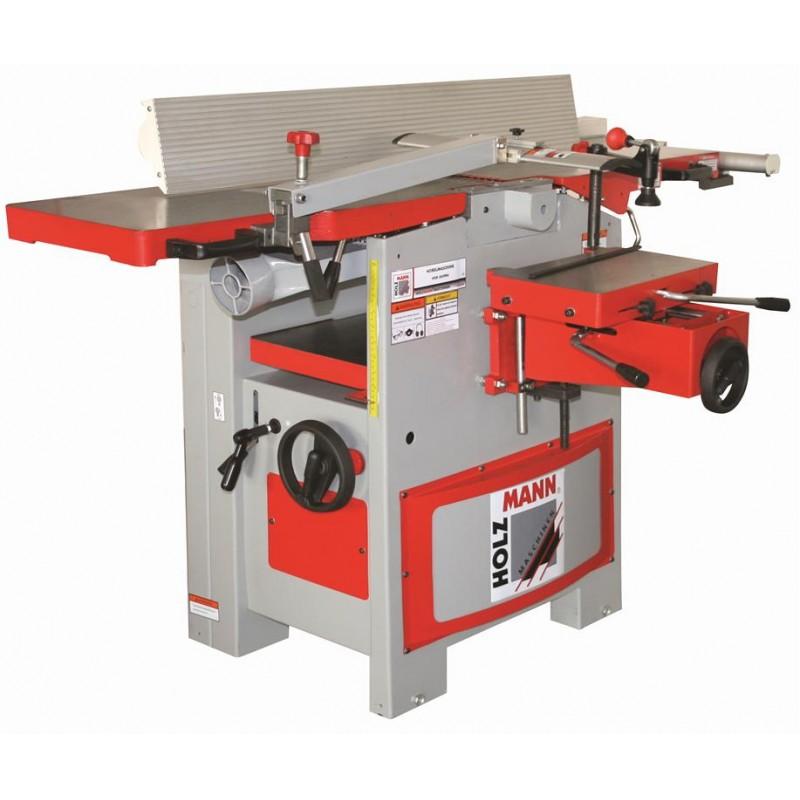
The main features of the machine are:
- Ideal for semi-professional operation
- Includes knife-holder shafts equipped with 4 knives
- Thickness planing table mounted on center cylinder
- The heather tables are foldable
- Aluminium guide rail
- Grinding spindle guards to CE standards
- Metal feed valves - can be disengaged when working on the jack
- The mortar unit is optional
Danibrum also offers a combined machine for small manufacturers HOB 410P from HOLZMANN, for €3100 + VAT.

Machine features:
- Tables made of the highest quality cast iron with special ribs
- 8 m/min fixed feed speed
- Includes knife-holder shafts equipped with 4 knives
- Thickness planing table mounted on center cylinder
- The heather tables are foldable
- Aluminium guide rail
- Grinding spindle guards to CE standards
- Metal feed valves - can be disengaged when working on the jack
- Free rollers in the thicknessing table
For industrial exploitation, Danibrum comes with HOLZMANN AHM 410P at 3950 euro + VAT,
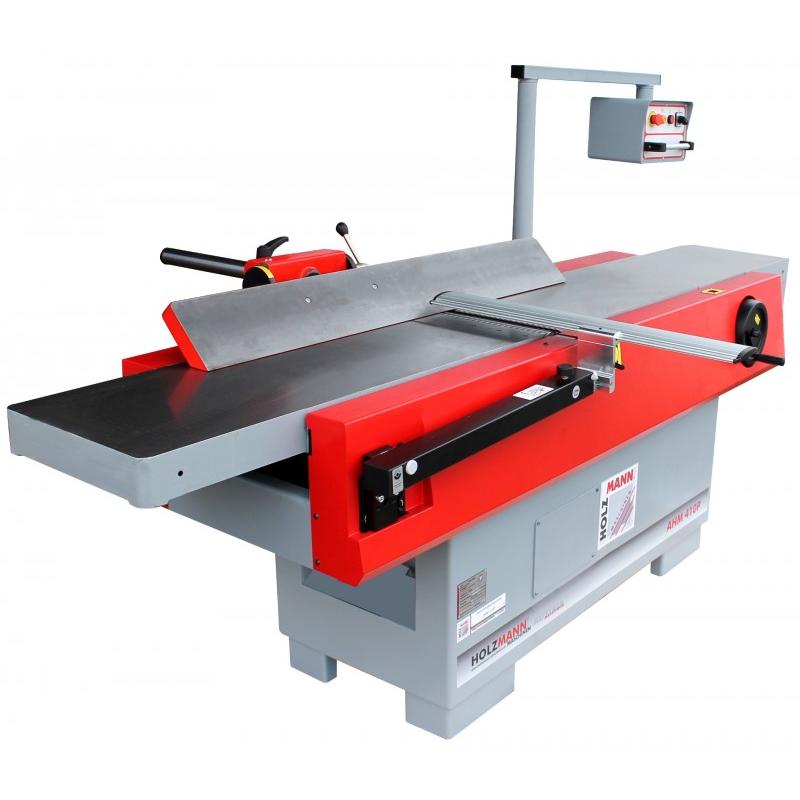
ROBLAND S 410 at 4500 euro + VAT,
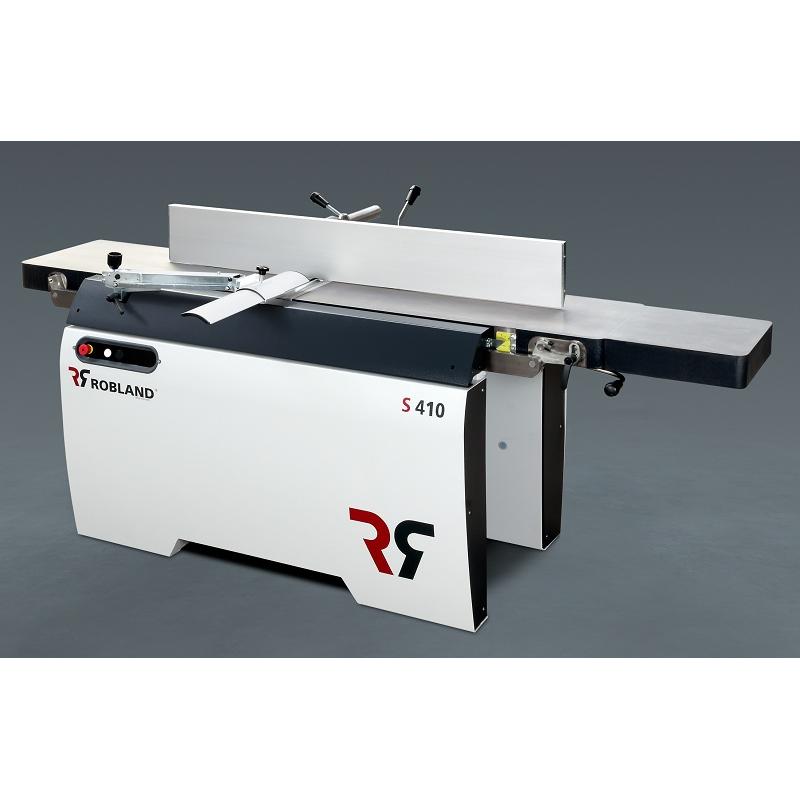
or something very industrial, PANHANS 334for €12720 + VAT.
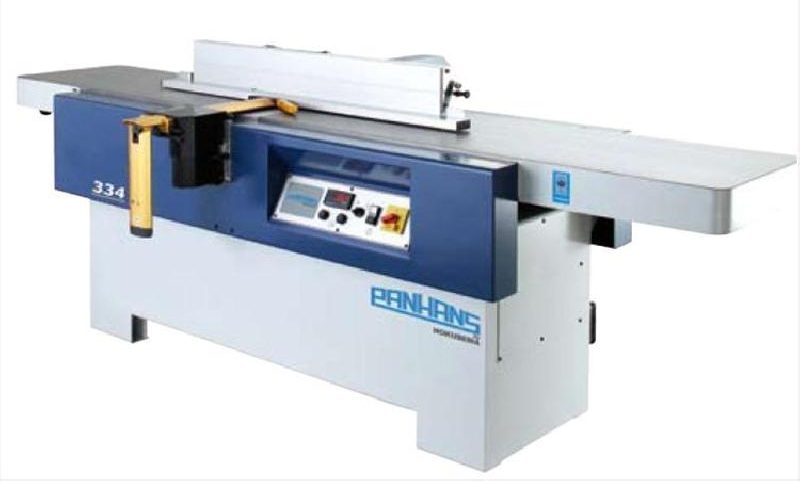
East European Trade
EET proposes mchipping - abricht MARTIN mod. T 54
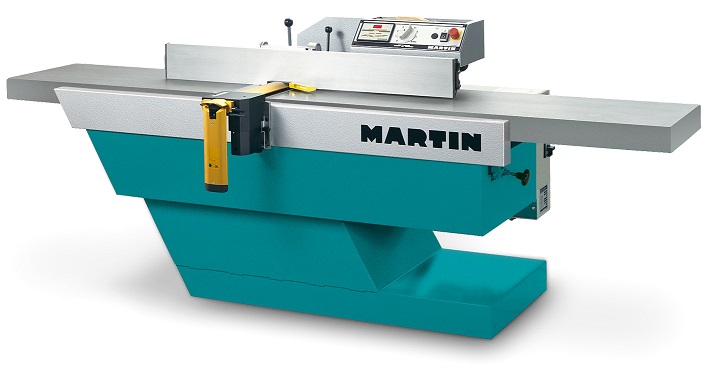
MARTIN is a German manufacturer known for the highest quality of its machines. In addition to the much-appreciated formatting circular saws, MARTIN also offers the perfect machine for planing, say the folks at EET. The model T54 was designed to do two things very well: to machine workpieces perfectly and to quickly and safely execute angled corners. The sliding linearizer moves smoothly and smoothly, facilitating fast and precise operation with the help of the aiding linearizer. The abricht stop with roller-bearing guides glides easily and evenly on the hardened rails, giving the user the same working comfort for decades to come as on day one. Shearing operations can also be carried out quickly with the 90° and 45° angle adjustment wheel.
As with all MARTIN premium machines, the machine frame consists of a MARTIN-specific reinforced concrete alloy that guarantees optimal vibration absorption and absolute stability. This special construction drastically reduces noise and provides a quiet working environment.
Some of the technical details of the MARTIN T54:
Engine power: 5.5 kW (7.5 hp)
Working width: 500 mm
Max. planing thickness / pass: 8 mm
Max feed table length: 2000 mm
Length of outlet table max 1580 mm
Weight: 1200 kg
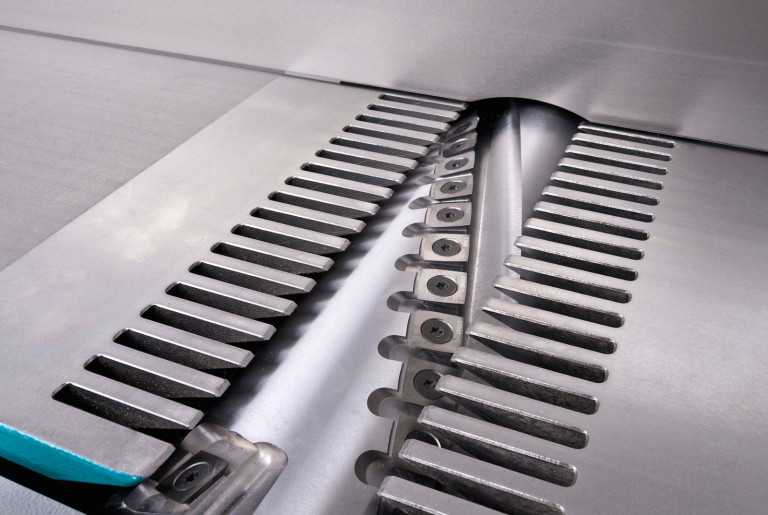
In place of the standard TERSA knives, 3 rows of special Xplane planing knives can be chosen. They impress both by their increased quietness and by the ease of cutting without strain on the machine's engine, even at greater cutting depths. The cutting quality especially of hard-to-machine materials is truly outstanding, thanks to the pull-cutting motion of the MARTIN XS-Cut knives. This increases the service life of the knives by up to 20 times.
The rotation speed is 6000 rpm, so you have the optimum cutting speed.

To always have the controls at hand, the control panel slides together with the abricht stop. The planing depth is digitally displayed and adjusted easily and precisely with a potentiometer-type knob.
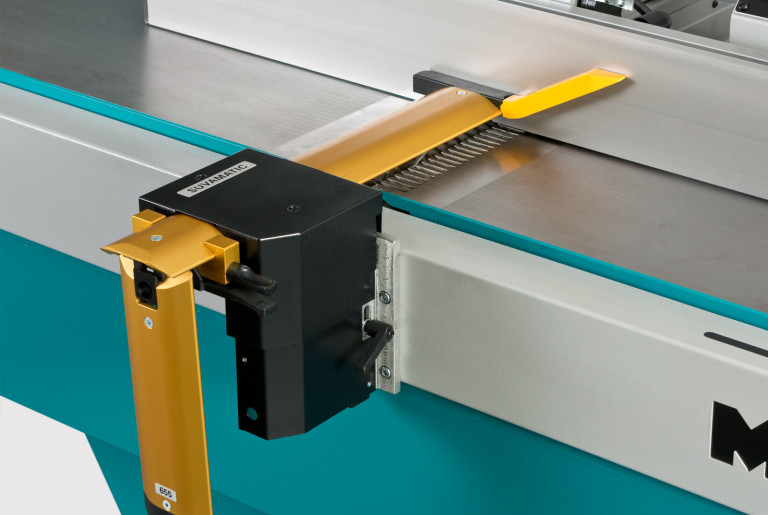
The protective device SUVAMATIC protects with a single layer of protection the entire planing area.
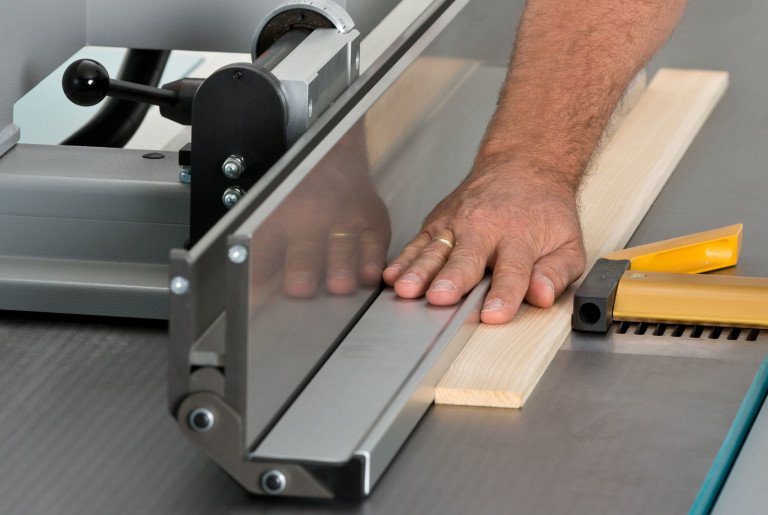
Thanks to this auxiliary stop you can also machine small and narrow workpieces. An important safety feature.
There is much more to say about abric. I hope I've piqued your curiosity to find out more on the subject.

























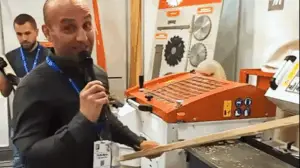
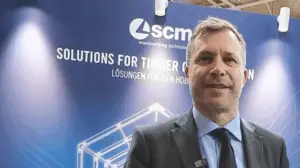
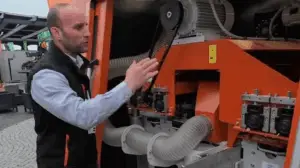
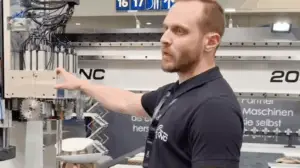
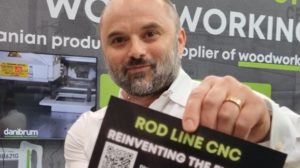
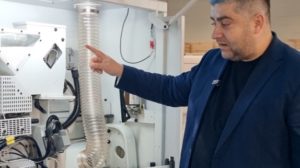
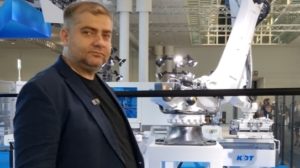
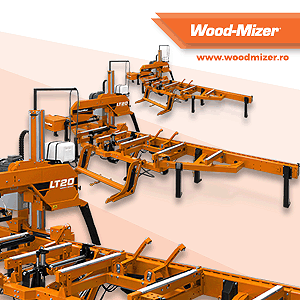
Hello. All esteem for the magazine dedicated to the wood industry that you manage.
I have, however, a few remarks, in particular, to the author of the article about the wood straightening operation (the one concerning the "abric"):
1. We are Romanians and we MUST use the Romanian language, without using "Englishisms" (?). The language is created by each people, so that its citizens can understand each other and this principle MUST be LAW. The more we address a wide audience of Romania, on a professional website.
2. We are professionally responsible for any statement or information we transmit to the public, especially through mass media. The responsibility lies in the fact that the user wants to be informed, BUT CORRECTLY.
3. In a school (regardless of its rank) various professions are taught (nowadays... not so much) and according to fundamental principles, various expressions, codes, standardized names are used, so that specialists and not only, can understand each other. If there are certain regionalisms, abbreviations or other names, coming from another language, these should NOT be promoted in professional expositions (possibly in parenthesis).
3.1 There is no "abric" nor "abricht" for a Roman professional, there is a STRAIGHTENING MACHINE, to which, depending on the straightening width, a code is assigned (e.g.: 200; 250; 300; 400; 500, etc.) which represents the width of the machining table - the symbol being MI 300 (e.g.). The operation is called STRAIGHTENING and not RINDING.
3.2 There is also no "thicknessing machine", there is a THICKNESS PLANING MACHINE (MRG), which performs the operation of uniformizing the thickness of the piece of wood processed (i.e. constant thickness along the length). As with straightening machines, these also have a code that represents the maximum width that the machine can process (250 mm; 300 mm, etc.) i.e. MRG 400.
3.3 There is no such thing as a "planing and thicknessing machine". there is the UNIVERSAL MACHINE FOR MACHINING (abbreviated: MUT) and they are machines intended for small workshops with small and diversified series production, comprising several processing modules such as: Straightening, Thickness Grinding, Milling (lower spindle milling cutter - equivalent to the normal milling machine - MNF), Horizontal Drilling and Slotting (equivalent to the MGSO- Horizontal Drilling and Slotting Machine) or/and circular slotting. These are machines with 2; 3; 4or/and 5 types of woodworking operations.
4. In conclusion, while respecting the fundamental principles of communication and expression within a profession, please respect them. Attention: those of us who answer or address the general public are also responsible for their education (education in a professional spirit). Otherwise, we end up that the carpenter from Ardeal will not be able to get along with the Dobrogean carpenter, one using "abric" or "banzic", and the other who knows what Turkish or Tatar name.
5. With all esteem to a professional school. Even amateurs should be instructed to use professional standard names.
Thanks for the completions